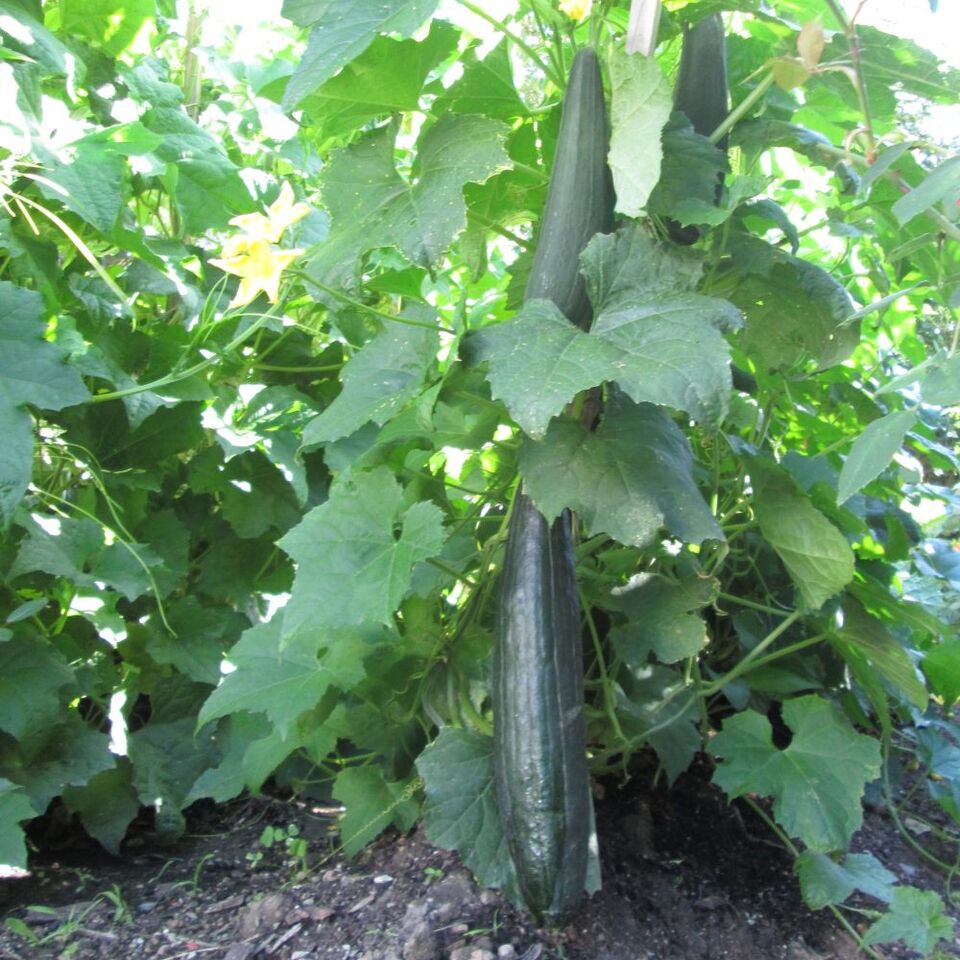Loofah Sponge Plant
Loofah (aka Luffa)
Did you know that your loofah isn't actually a sea sponge? These fantastic exfoliating sponges are, in fact, a fruit grown on land! Loofahs grow on a vine, much like a marrow. Once dried, their skins are peeled away to reveal a fibrous interior. This natural, absorbent material is what makes them so effective for exfoliating in the shower and for various cleaning tasks around your home.
Many people think that loofah comes from the ocean, which throws up many curious questions when at the local craft markets chatting to customers where I get asked, "So how deep do you have to dive?" or "How did you get permission to harvest these from the ocean in New Zealand?". People are absolutely amazed that I grow them on a vine in my backyard (and in a dedicated loofah patch) and that they can grow them too.
They're the same family as a cucumber, pumpkin and gourd (known as Cucurbitaceae) but they have a longer growing season of 190 days. We grow them up on a structure so they hang nice and straight and are up off the ground in case it's a wetter than usual summer where they can easily rot.
Where Does a Loofah Come From?
The loofah plant is native to tropical Asia and Africa, where it's been cultivated for food and skincare use for thousands of years. Today, it's grown around the world in warmer climates, from the southern United States and parts of New Zealand and Australia to India, Thailand, and beyond.
Countries Known for Loofah Cultivation:
-
Egypt – One of the leading global suppliers
-
India – Grown for both culinary and cosmetic use
-
Thailand – Where it’s known as "buap liam"
-
China – A major exporter
Is Loofah Edible?
Yes! When harvested young and green, loofah (especially Luffa aegyptiaca) is a popular vegetable in Asian cuisine. It’s tender and slightly sweet, often used in stir-fries, soups, and curries.
Known as:
-
"Chinese okra" in English
-
"Turai" or "Gilki" in India
-
"Patola" in the Philippines
-
"Hechima" in Japan
How Is a Loofah Made? From Plant to Sponge
Depending on the climate they can be a little tricky to grow but there are different ways to overcome the challenges so you can have your own sponges.
Step 1: Growing the Plant
Loofahs grow much like cucumbers or zucchinis. The plant prefers:
-
Warm, frost-free climates
-
Well-draining soil
-
Full sun (at least 6 hours/day)
-
A trellis or vertical support
After flowering, long green fruits resembling zucchinis appear. These can grow up to 30–60 cm (12–24 inches) long.
Step 2: Letting the Fruit Mature and Dry
For sponges, the fruit must fully ripen and dry on the vine until the skin turns brown, brittle, and light. At this stage, it rattles when shaken—a sign the interior fibers are ready.
Step 3: Peeling and Cleaning
Once harvested:
-
Soak the dried fruit in water to soften the skin.
-
Peel away the outer shell by hand.
-
Rinse the fibrous core thoroughly to remove seeds and sap.
-
Optionally, soak in diluted bleach or baking soda to whiten and sanitize.
-
Dry completely in the sun before use or storage.
The result? A lightweight, biodegradable sponge that lasts for months with proper care.
Posted: Friday 27 June 2025

